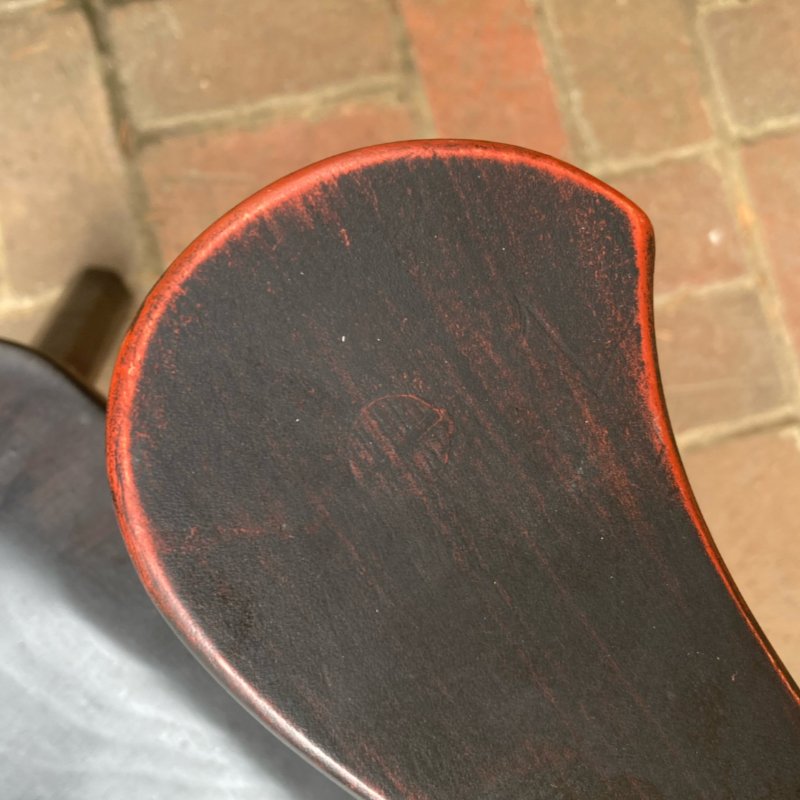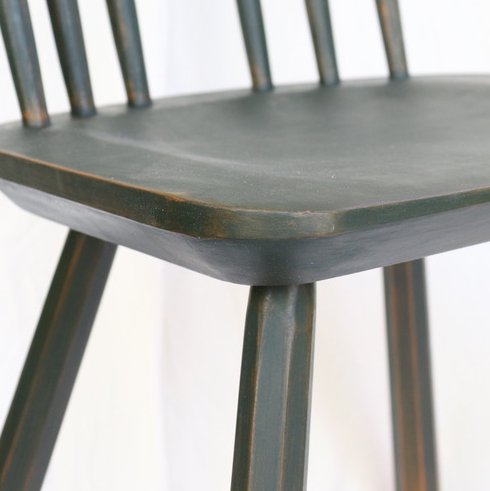On milk paint
Layering colors highlights wear patterns and makes a chair or stool more attractive as it ages.
What milk paint is
Milk paint is paint made from casein (milk protein), lime, and pigment, as well as perhaps other binders or preservatives. It has been used, so I read, for thousands of years, and you can make it yourself at home from fresh milk, if you’re a home-chemistry-lab sort of person. Buyer beware: some of what is marketed as milk paint contains no casein and is not therefore milk paint; it may have similar properties but will not be identical. Old Fashioned Milk Paint and Real Milk Paint are two brands that are what they say they are. (There may be others; I haven’t done a recent survey.)
Long as it’s been around and for all its “colonial” associations, milk paint was not actually used for furniture and homes in 18th-century British North America: linseed oil was the medium of choice. But it has become the go-to for modern American-style Windsor chairs, perhaps because a thin coat of black milk paint over a red base emulates the patina of an antique, though also for the reasons I give below. Eighteenth-century Windsors were typically bright green.
Why I use it
I use milk paint for three reasons. One, because it’s all-natural and has zero VOCs (in fact it’s food-safe), I don’t need gloves or a respirator to work with it, and the leftovers can go down the drain. Two, sanding lightly between coats and buffing the final coat gives a smoother finish than I have been able to get with other media. (Actually you pretty much have to sand milk paint between coats, but you can make a virtue of necessity.) And three, milk paint wears well — not only wears slowly but wears attractively, which is important on a chair or stool. If I layer two or more colors, as the top color wears, the undercoat shows through and highlights the facets and wear pattern. Paint on chairs will wear, so you may as well, again, make a virtue of necessity.
A drawback, unless you like that sort of thing, is that the final surface is dead-flat with a somewhat chalky tone. Burnishing the paint will deepen the color and bring the surface up to something like eggshell, but an oil-based topcoat will have the same effect. For both durability and attractiveness, I nearly always finish with some combination of oil and wax.
(You might also ask, why paint furniture at all? In the case of a chair or stool, it’s because different species of wood are best for different parts, and the paint unifies the form. I also find that when a piece of furniture has a form as complex as a chair, strong grain is apt to detract from the design rather than enhance it.)
Color effects
Below are some of the layering effects I’ve been particularly happy with.
My preferred brand is Old-Fashioned Milk Paint, and I’m willing to try pretty much any color they make. The creamy light brown in the photo above is a custom blend of colors.







